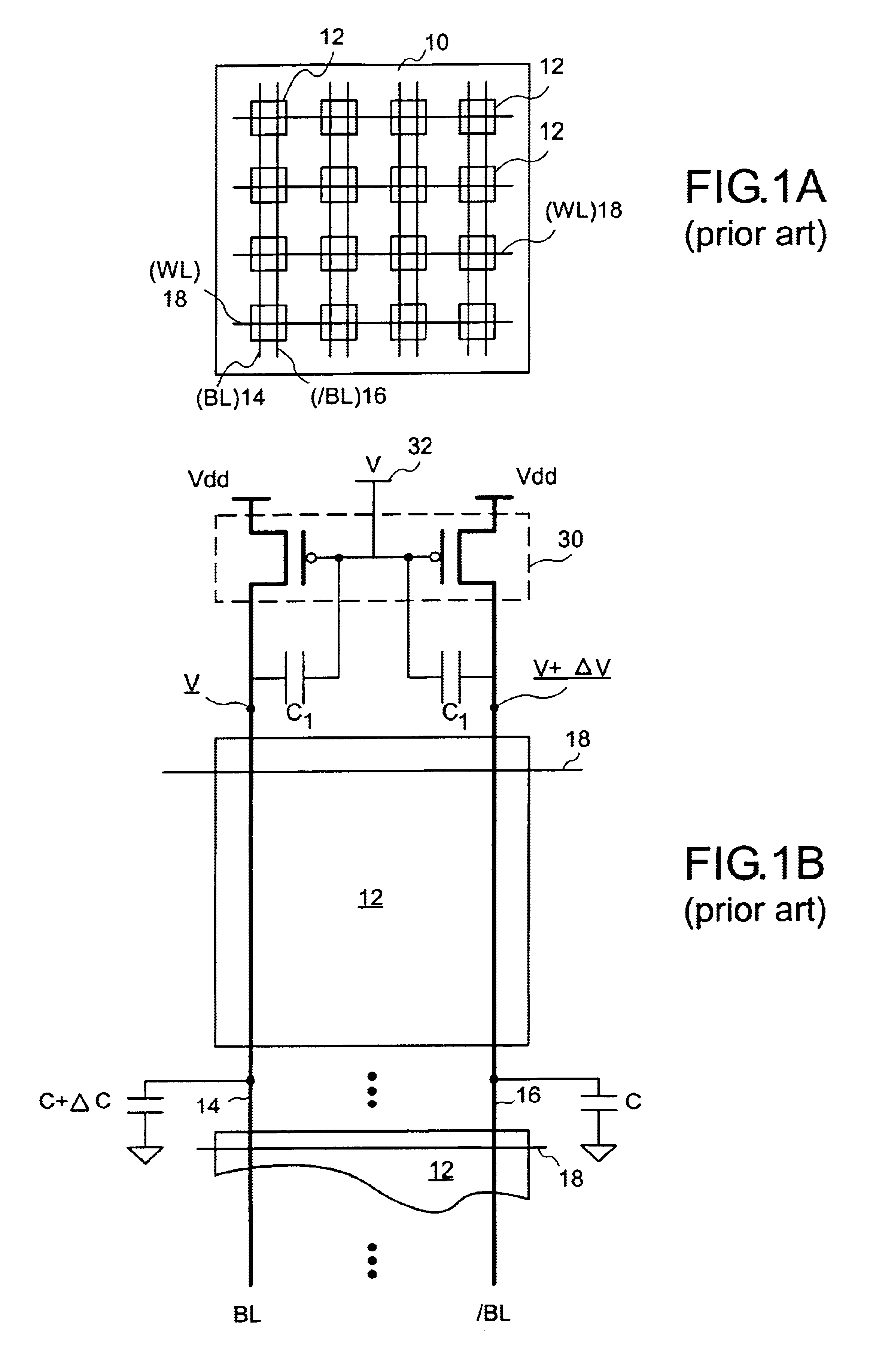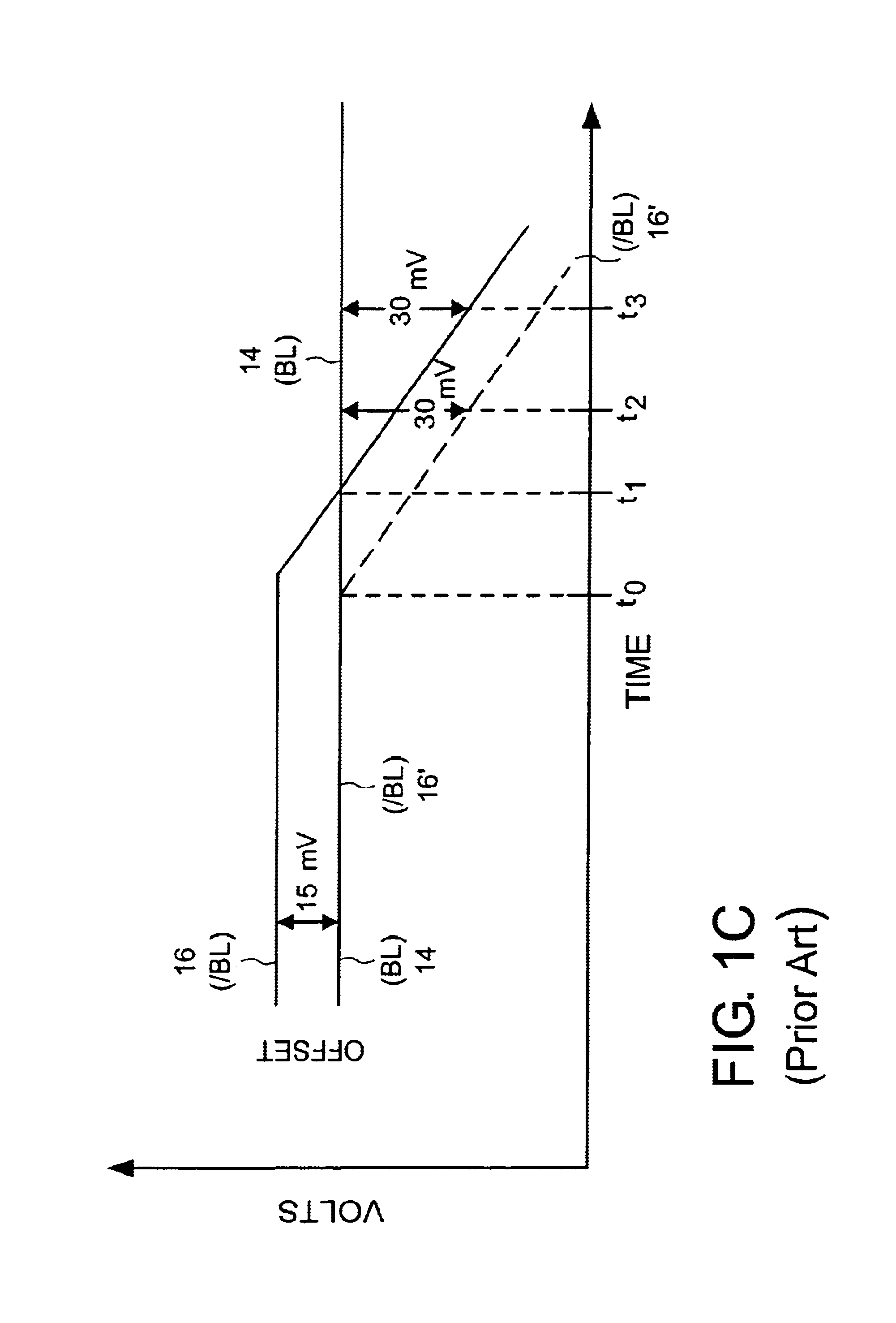Memories having reduced bitline voltage offsets
a technology of memory and bitline, applied in the field of memory devices, can solve the problems of affecting the speed at which sense amplification may occur, affecting the speed of sense amplification, and affecting the operation of the device, so as to reduce the physical size of the core cell, eliminate the voltage offset between bitlines, and reduce the capacitance of the line
- Summary
- Abstract
- Description
- Claims
- Application Information
AI Technical Summary
Benefits of technology
Problems solved by technology
Method used
Image
Examples
Embodiment Construction
[0035]An invention for memory layout techniques that substantially eliminate voltage offsets between memory core cell bitlines, and techniques for laying out core cells in substantially less semiconductor chip area are disclosed. In the following description, numerous specific details are set forth in order to provide a thorough understanding of the present invention. It will be understood, however, to one skilled in the art, that the present invention may be practiced without some or all of these specific details. In other instances, well known process operations have not been described in detail in order not to unnecessarily obscure the present invention.
[0036]Although several embodiments of the present invention are directed toward asynchronous and synchronous SRAM memory devices, the capacitive load balancing and layout designs of the present invention may also be applicable to other memory devices, such as a ROM device, a RAM device, a DRAM device, an EPROM device, an EEPROM de...
PUM
 Login to View More
Login to View More Abstract
Description
Claims
Application Information
 Login to View More
Login to View More - R&D
- Intellectual Property
- Life Sciences
- Materials
- Tech Scout
- Unparalleled Data Quality
- Higher Quality Content
- 60% Fewer Hallucinations
Browse by: Latest US Patents, China's latest patents, Technical Efficacy Thesaurus, Application Domain, Technology Topic, Popular Technical Reports.
© 2025 PatSnap. All rights reserved.Legal|Privacy policy|Modern Slavery Act Transparency Statement|Sitemap|About US| Contact US: help@patsnap.com



